Project Studio Space
Available in Manhattan
Click Here
or call 212-226-0480
Studio Design & Room Tuning
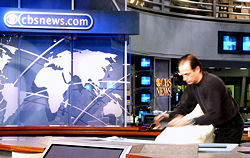
CBS TV News, New York City
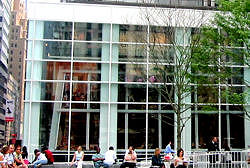
CBS "The Early Show" Studio, N.Y. City

Veteran CBS broadcaster Mike Wallace in the Acoustilog-treated voiceover booth at 60 Minutes Studios. The bubbles on the walls make the booth simulate the office environments where guests were interviewed, thus allowing seamless editing between studio and field audio.
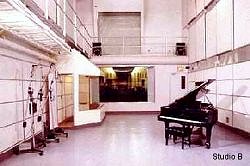
Sorcerer Sound Studio B, New York City
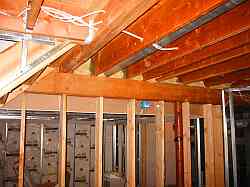
The owner of this home studio called us in before building his music practice room. This enabled him to avoid an expensive mistake. His contractor was about to put in the wrong ceiling for the type of music he plays
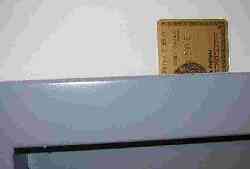
Many studio designers don't inspect their own work. This studio wasn't sealed above the door frame and sound was pouring in.
Room Tuning
Alan Fierstein brings more experience to room tuning than anyone else in the NY City area, using the best equipment and a unique philosophy to optimize your listening environment. Part of this philosophy is knowing when Monitor Equalization will not be an adequate solution to a room's problems. See "The Equalization Myth", written by Alan Fierstein for dB, The Sound Engineering Magazine
Read a recent testimonial letter from a studio owner re: Room Tuning.
Studio Design
It is the position of Acoustilog that an acoustical consultant's job is to
determine the special needs of each client, and to create a design that avoids
the potential problems which are inherent in the planning of a new studio. We
do not repeat our designs, or copy the ideas of others. We feel that quality
cannot be mass-produced, and take pride in a studio which has been customized
to meet the owner's requirements.
Read a letter from a recent studio client, who says he wishes he'd called us before spending a lot of money on ineffective treatments.
But imagination must be tempered with experience, and here Acoustilog's
position in the design field is unique. We have many years of experience in
both acoustical design, and the creation and use of measurement technology to
assist in the design process for each project. We make the appropriate tests
(such as diffusion, reverberation and isolation) before, during and after
construction. Our experience has given us a unique ability to interpret these
measurements and to translate them into efficient acoustical treatments.
We maintain a sophisticated laboratory to invent custom equipment for unique
requirements and to maintain the accurate calibration of all our gear. In
1975, Acoustilog was first to manufacture a digital Reverberation Timer
designed specifically for analyzing control rooms, and we were first to start
applying this to studios. We also make real-time analyzers, calibration
systems, noise tapes, and we are the only company manufacturing TDS conversion
systems for HP and Tektronix equipment. Our Impulser allows testing of phase
alignment of speakers.
Acoustilog will work with you to establish acoustical performance criteria,
develop appropriate details, do testing and examine all critical
construction. Working in this way, we have created innovative
designs that perform as well as or better than "boiler-plate" versions. This
is only possible where continuous acoustical supervision and measurements are
part of the design process. It is a quality control approach that most other
firms do not offer.
Please visit our Client List page to see a partial list of our many Recording and Broadcast Studio Clients
Safety Alert
The tragic nightclub fire in Providence, R.I. has put a spotlight on the safety of so-called "soundproofing foams". Many studios, especially home and project studios, use similar materials. Please visit our Safety page to learn more.
Problems With "State of the Art" Measuring Systems
As a leader in the field of studio testing, we are often called on to correct
"world class" studios that, despite the enormous design fees paid, contain
serious acoustical design flaws. Unfortunately, some studio design firms know
more about interior decorating than about acoustics.
Often we are called in to correct problems in brand new studios. After some of these fact-finding missions uncover design errors, some of these consultants now use us to double-check their design before showing it to the client.
We are often asked about the latest measurement systems or "trendy"
trademarked design philosophies. As a consulting firm, Acoustilog is often
called in to "de-certify" certified "LEDE" rooms that had poor acoustical
performance. Usually, these rooms are "designed" with TEF devices. Time Delay
Spectrometry, or TDS (and TEF) systems output far more information than is
required for a control room design. They are suited for research, not for
design. However, the vast array of computer-generated data from such a device
is impressive and is unfortunately being used to impress non-technical
clients. What is even more disturbing is that a large and growing group of
people who have the benefit of a 3-day course in the use of this single
device are calling themselves Control Room designers, and lack the experience
necessary for the job. Worse, they have years of experience doing the same exact design, unaware of its flaws.
Time Delay Spectrometry has valid uses in research, and we use it ourselves
with our own custom system, based on a Tektronix Swept Spectrum Analyzer and
an Acoustilog Voltage-Controlled Oscillator. But we only use it for research,
such as measuring the absorption curve of a new material. Use of this device
in a Recording Studio is not only overkill, it is usually inaccurate compared
to basic acoustic measurement methods.
The difference between Acoustilog and most other Recording Studio Design
Firms is successful experience. Often, acoustical designers make basic mistakes that
can be corrected, and solving these problems is our specialty. This gives us
valuable experience in avoiding similar problems in ground-up designs. And as
New York's busiest acoustic troubleshooters, we see more rooms than other
designers. With the advent of TEF courses, we are busier than ever.
 ®
®





